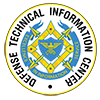Silver Atom Nanoclusters Could Become Efficient Biosensors
Researchers have now managed to pinpoint what happens when light is absorbed by extremely small nanoclusters of silver atoms. The results may have useful application in the development of biosensors and in imaging. By combining chemistry and nanotechnology, the research community in recent years has developed a kind of extremely small nanoclusters consisting of only













